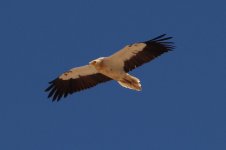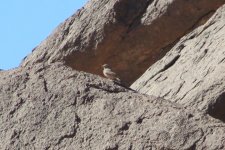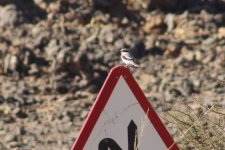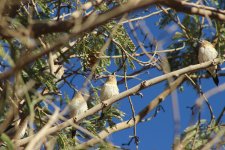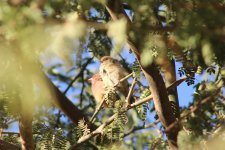spocki
Well-known member
Hi
More photos from Tam.
1 - Egyptian vulture
2 - no idea
3 - Grey shrike (great?)
4 - some kind of finch
5 - Red-billed firefinch
Thanks a lot for your help!
More photos from Tam.
1 - Egyptian vulture
2 - no idea
3 - Grey shrike (great?)
4 - some kind of finch
5 - Red-billed firefinch
Thanks a lot for your help!




